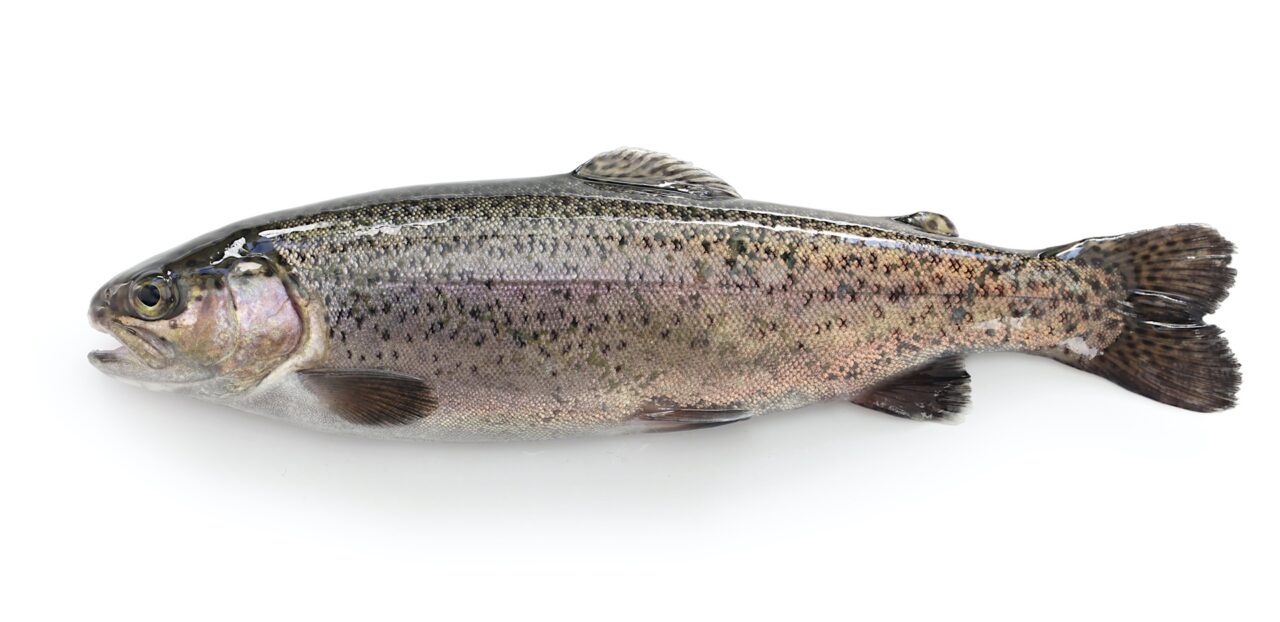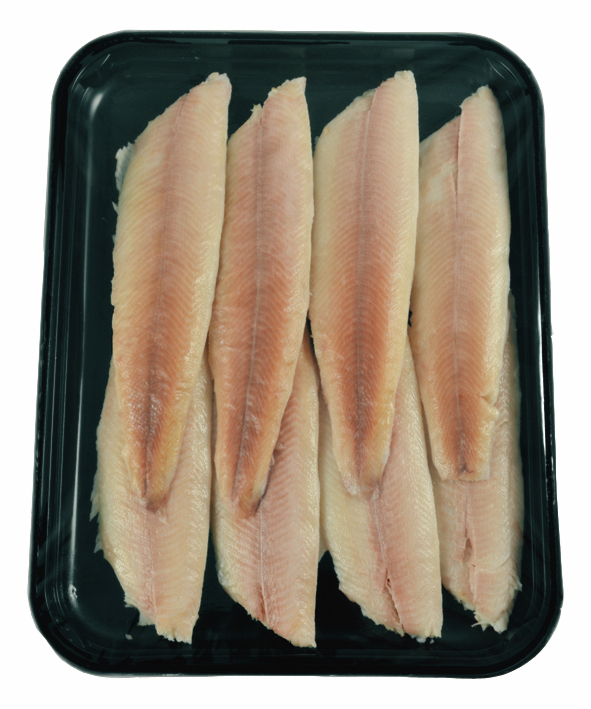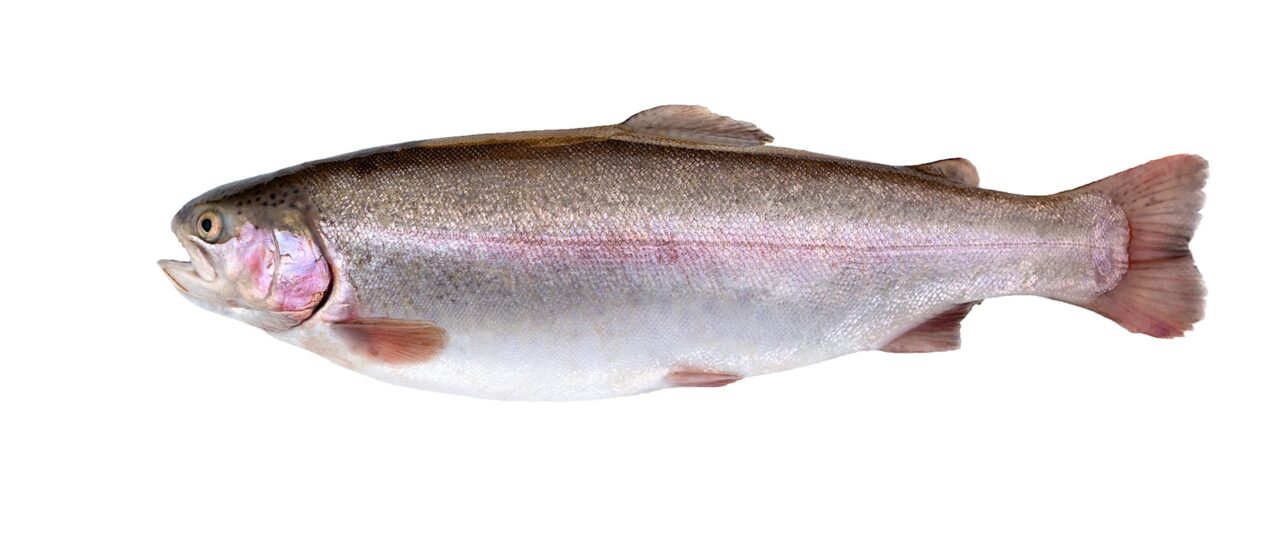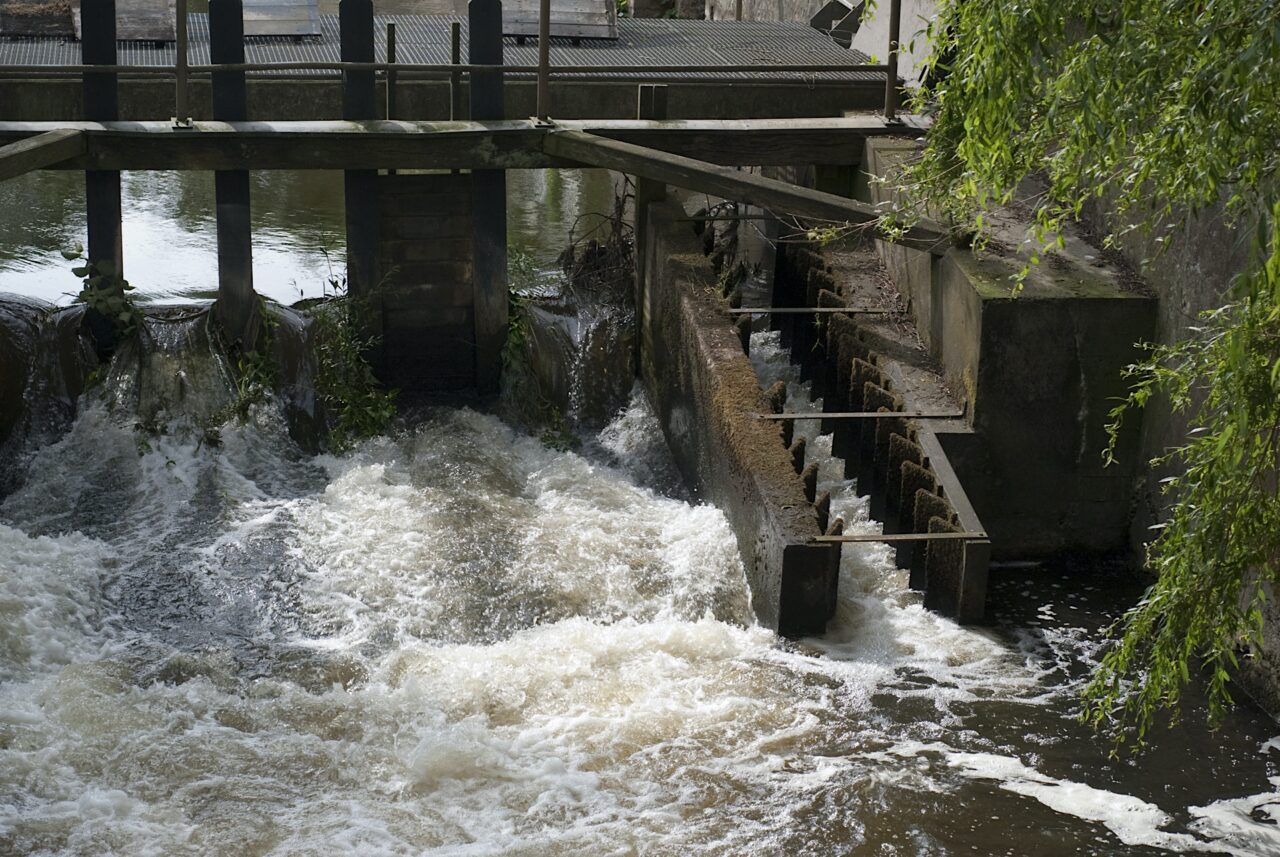Nederlands
English
Deutsch
Français
Trout is a fish species that many people enjoy eating fresh as well as smoked. In the counter, smoked trout fillets are often found next to mackerel and eel fillets. As a fresh fish, trout is usually sold whole and cleaned and displayed at the fresh fish counter.
While trout is a very versatile fish – it can be smoked, boiled, stewed, poached, fried or grilled and oven-baked – it is also a very sensible fish. This article will explain the reasons for this and elaborate on the origin of trout, the different species and the diversity of this popular farmed fish.
Would you like to buy good quality trout?
Are you a buyer looking for trout, and do you want guaranteed quality? This article will highlight what to look for in terms of quality when buying trout and describe our diverse range of trout products.
The topics discussed in this article:
rout is a delicate fish with a tasty yet neutral flavour. Scientifically speaking, trout is related to the salmon species (Salmonidae). Both fish have the same shape, are quite fatty and initially have the same migration pattern. This means that when they reach maturity, they swim from the sea upstream into the rivers and thus back to their birthplace to reproduce.
Salmon grow to become much larger than trout. Trout remain quite slim and – unlike salmon – hardly have any scales. Trout is a very popular barbecue fish due to its structure and its practical size. Because trout are not too big and equal in size, you can easily place them whole next to each other on the barbecue. Trout is nice and fatty, so they do not dry out too quickly. They are also ideal for smoking, just like salmon.
A trout’s colours depend on its location: freshwater trout are more yellowish-brown, while saltwater trout are silvery with clear black dots in no particular pattern. The colour often changes during the spawning season.

Although the average trout weighs around one kilo, it is not uncommon to see gigantic trout caught in the wild, weighing around 20 kilos and measuring more than a metre in length.
Before we continue talking about trout, it is important to know that ‘trout’ is a relatively broad term. The fact is that trout is a collective term for many different fish species, both wild and farmed, and for both freshwater and saltwater fish. However, the trout we commonly buy is exclusively rainbow trout.
Rainbow trout get their name from their coloured flanks and is the most popular and commonly known trout in the Netherlands. This farmed trout is a freshwater fish and usually comes from farms located in Denmark and the Netherlands. When you order trout in a restaurant or buy it in a shop, you always get the farmed version.
Rainbow trout are often sold either as a whole fish or as trout fillets. Trout is mainly popular as a fresh fish product, but whole smoked trout or smoked trout fillets are also widely sold.

When it comes to freshwater trout, there are also distinctions. In addition to rainbow trout, you also have sea trout. Or at least, that is how it is often called. In fact, sea trout is rainbow trout but is larger in size. Sea trout are fed different food, such as shrimps and crustaceans, and therefore their flesh is pinkish – just like that of salmon.
In terms of flavour and structure, sea trout still remains trout. It is, however, slightly larger than ‘normal’ rainbow trout and is available in different sizes, such as sea trout 4/5 and sea trout 5/7.

Besides all the ‘standard’ trout products such as fresh rainbow trout, rainbow trout fillets and whole sea trout, other trout products such as (hot) smoked trout fillets and trout eggs are also extremely popular. Trout eggs are also known as trout roe and have a beautiful orange colour.
Due to its beautiful bright colour, the eggs are often used as decoration or topping – the finishing touch. But the eggs do not only look beautiful; their mild salty taste is also delicious! Larger salmon trout also produce delicious and beautiful orange salmon roe.
But what about wild trout fishing? The idyllic image of a holiday by the lake, catching trout that are then immediately grilled on the barbecue?
Trout do not exist in large numbers in the wild, but they are found all over the world, from North America to North Asia and Europe. The largest wild trout population is found mainly in river basins in Austria, Italy, the Ardennes and Norway, where the water is cold, clear and oxygenated.
For many years, wild trout has been divided into three species, namely sea trout (Salmo trutta trutta), brown trout (Salmo trutta fario) and lake trout (Salmo trutta lacustris). This subdivision is based on the trout’s habitat and migration pattern. The anadromous sea trout, for example, migrates between its freshwater nursery area and the sea/ocean, whereas brown trout spends its entire life in freshwater. Lake trout are mainly found in Ireland and is also a migratory trout species.
Depending on where the trout are born and the conditions they are exposed to, a trout can either spend its entire life in freshwater (like brown trout) or develop into a migratory form like sea trout. The anadromous lake trout has roughly the same life history as sea trout but grows up in large, deep mountain lakes.
If we consider the trout’s ability to adapt, then the distinction into subspecies (S. trutta trutta, S. trutta fario and S. trutta lacustris) is actually incorrect. Sea trout, brown trout and lake trout are all varieties of the same fish species.
As trout are able to adapt so well to their circumstances, one would think that it is practically impossible for them to become extinct. Yet trout still only occur sporadically in the wild. The biggest cause, as is unfortunately often the case, is man’s irreversible interference in nature.
The construction of many dams, locks and dykes caused a sharp decline in the trout population at the beginning of the 20th century. These necessary human constructions formed migration barriers for the trout and caused crucial changes in their spawning and birthplaces. As a result, trout ended up staying in one place more often than not, reproducing very little, if at all.
Nevertheless, the trout IUCN status is ‘not endangered’. This is partly because the trout adapts so easily and because this fish is a lot less critical of its habitat than, for example, salmon. In addition, people have been working hard for years to restore trout populations. Sustainability is now more important than ever, and innovative ways to restore the entire fish population are continually being looked at.
One of these measures to restore trout numbers is the fish ladder. The fish ladder ensures that fish – in this case, trout – do not suffer from migration barriers. By placing several tanks with flowing water in stages, trout can swim to a higher or lower level and thus reach the other side of a dam, lock or dyke.

There are various techniques for a fish ladder, depending on the fish species in that environment. Besides these kinds of innovative measures, there are of course the strict regulations on overfishing. Add to that the many sustainable fish farms, the future of trout looks bright indeed.
The trout eaten in Europe come from aquaculture and mostly from Denmark. In Denmark, trout of the highest quality are bred. This is partly due to the size of the catchment area and the quality and purification of the water. Trout like cold, clear and oxygenated water.
Other countries where trout are farmed include France, Italy, Turkey, Spain, Belgium and the Netherlands. In the Netherlands, there are a total of four trout farms that produce 100 tonnes of trout annually. These trout are not only bred for consumption but also to maintain the trout stock and for sport fishing. When fully grown, the farmed trout are released into rivers, lakes and ponds. To fish for these trout in the winter months is not allowed, and there is a limit of one trout per person at all times.
Trout are bred in very large basins at sea. Just like salmon, the trout’s fertilised eggs are bred into small fish in round tanks with flowing water. Up to 30,000 trout eggs are produced at one time.
When the fish are big enough, about 8 to 10 centimetres, they are moved to gigantic outdoor ponds. To ensure optimal living conditions for the trout, new freshwater is continuously pumped from the surrounding rivers to these outdoor ponds. It takes about a year to grow a 350-gram trout.
As the trout for consumption is a farmed fish, we can eat trout all year round. Trout are often bought fresh. Most people take the trout home whole (cleaned), but of course, the fish can also be filleted.
In terms of fattiness, price and taste, trout is an excellent choice. Trout is also a sensible choice: because all fish for consumption are farmed, there is no question of threat or extinction. What is also very important is that the trout are bred in the right way: there is absolutely no use of antibiotics. This makes trout a very responsible choice for humans.
Are you curious about the entire trout product range of Mooijer-Volendam? At Mooijer-Volendam we have a diverse range of trout products, both whole and filleted, fresh, smoked and as caviar. All our trout products are provided with the ASC quality mark.
Discover the full range of trout products at Mooijer-Volendam
Are you looking for good quality trout products? Then you are at the right address. As a wholesaler, Mooijer-Volendam sets high standards for its quality, also with all our trout products. Our customers can rely on AAA product quality; something which customers also demand from us.
This is why more and more customers find us as a wholesale partner for the catering industry or as a wholesale partner for fish shops, speciality shops and large retailers.
Are you curious about all our trout products?